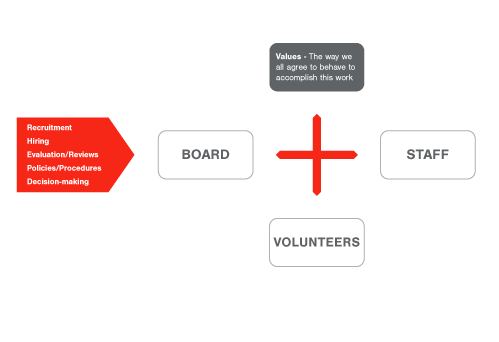COVID-19 created a storm in the labor market as companies were forced to close or suspend operations. In the aftermath of the pandemic, organizations of all sizes and types share a common denominator: mass vacancies. It seems most are scrambling to fill critical positions with quality employees.
The U.S. Bureau of Labor Statistics in a May report said the U.S. unemployment rate was 3.6%. Within that group, around 6 million were actively searching for a job. More than 1.5 million were classified as “not looking” or “don’t want a job.”
Mass Workforce Exodus
A recent Pew Research Center study found that low pay and lack of opportunities are two major reasons for people leaving their jobs. It also shows a lot of people quit because they feel disrespected or not appreciated in the workplace. Roughly half say childcare issues were a factor in their decision to leave.
Whether you’re an organization that has three, 30, or 3,000 employees, it’s a reality that you need quality, committed employees to be successful. It can be nearly impossible to carry out the work if you don’t have the right individuals in place.
A 2022 nonprofit study by FORVIS (a merger of BKD and DHG) found that more than seven out of 10 organizations across the nation are finding it difficult to deliver their programs and services because of workforce shortages.
This poses a threat on many levels. Of course, it’s a threat to the people you serve. In addition, other companies and institutions are hurt when your organization isn’t able to do what you do. Your work is interconnected to further boundaries. When one fails, there is a broad ripple effect.
In the 1987 movie “Wall Street,” Gordon Gekko told the world, “Greed is good.” The movie depicted work and wealth-obsessed executives putting in long hours to boost their lucrative salaries at the expense of whomever got in their way. If you live and breathe work, the message was, the rewards will be exciting and immense.
Seventy- and 80-hour weeks aren’t exclusive to Wall Street or Silicon Valley. In the nonprofit industry, passion—not money—can drive employees to work long hours, often at the sacrifice of their families and own well-being.
Billionaire tech entrepreneurs advocate for sacrificing sleep so people can “change the world.” A new study by the ADP Research Institute shows that employees around the world put in an average of 9.2 hours of unpaid overtime every week.1
Vanishing Boundaries
We live in a culture that operates at warp speed and never seems to take a break.
Social media is 24/7.
Messaging is 24/7.
Amazon Prime is 24/7.
Everything is 24/7.
And since the pandemic hit, our workdays have gotten longer. We send emails and Teams messages at midnight as boundaries between our personal and professional lives have faded. It’s no wonder people are leaving. They are simply exhausted. They are overwhelmed.
The global pandemic was devastating for millions of individuals, families, and companies. However, one positive result was that it cast work-life balance in an entirely new light. It helped us to realize what matters most.
The world has changed dramatically in the past three years. What employees now want has changed dramatically, too.
| Employees of the Past | Employees Today |
| Work to earn a paycheck. | Work to create positive change in the world. |
| Struggle to balance work and personal. | Rhythmically blend work and personal. |
| Leave home to work. | Work from home or anywhere. |
| Join nonprofit to better the world. | Better the world through responsible employer. |
What Is Organizational Culture?
The changes in the past two years have brought about a renewed focus on workplace culture. There’s no one way to define a culture. It’s open to interpretation.
Every organization—nonprofit and for-profit—has a culture. Regardless of whether you take the time to build a strong culture, one will appear. And it likely won’t be the one you want or that best serves your organization.
Culture fit is the glue that holds an organization together. That’s why it’s a key trait to look for when recruiting. The result of poor culture fit due to turnover can cost an organization between 50 to 60% of the person’s annual salary, according to the Society for Human Resource Management (SHRM).
Building the Organizational Culture
My role at FORVIS allows me to do a lot of strategic planning for organizations. One of the first things we do in that process is develop, or at least revisit, the organization’s mission, vision, and values. These are bedrocks that can strengthen and differentiate the nonprofit.
Most people are pretty good with the mission and vision part. But they often struggle forming the values, which are sometimes called guiding principles or core beliefs. For a lot of organizations, values are just warm and fuzzy statements that sound and look good. But at the end of the day, they are meaningless; they don’t live them out.
These are bumper sticker values. They’re placed on the website and stashed away in a document. But nobody applies them; they are not integrated into the work. Your employees know if the values are embedded in the everyday work or if they exist just because you felt compelled to name some, but really had no intentions of implementing them.
True values are integrated into every aspect of the organization and apply to everyone—board, staff, even volunteers. The values are an essential part of the recruitment, hiring, and evaluation process. They can be seen in meetings, decision making, and how your team interacts with others at all times in all places.
Numerous studies, including one done by FORVIS, reinforce the importance of culture when recruiting employees. Almost half (46%) of job seekers cite company culture as “very important” when choosing to apply for a position.
Getting Started
If you’ve never identified your organization’s core values, or need to refresh your old ones, start by asking these questions:
- Do we operate with transparency and accountability in every aspect of our work?
- Do we welcome differing opinions and viewpoints to help us stay fresh?
- Do we solicit and follow up on feedback from our team and stakeholders?
- Do we constantly analyze our processes and outcomes to make sure our programs are innovative and effective?
- Do we demonstrate beyond words that our employees are valuable and critical to our success?
Make it an inclusive process by engaging your staff and board (since they will be asked to live out these behaviors).
Answers to these questions will give you a solid foundation to form what’s most important to your nonprofit. Once set, communicate them frequently and live them out in every aspect of your work.
If you have questions and need assistance, reach out to a professional at FORVIS or submit the Contact Us form below.
- 1https://www.adpri.org


